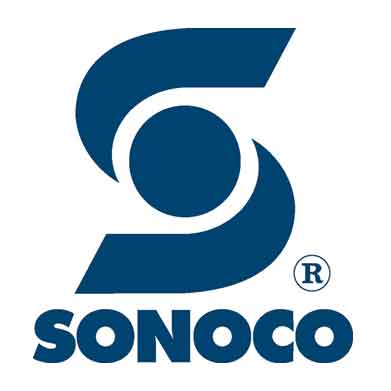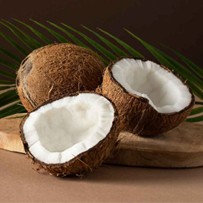
Hockenheim, 4 May 2017 – (NYSE: SON) What began decades ago as simple paperboard containers with labels attached by hand now shines in the supermarket spotlight as a faithful companion and ambassador for a variety of brands. Rigid paperboard containers look great on the shelf, in shipping parcels, or at home. Today, they can be decorated with high-quality all-around labels from the base to the high-tech lid – and are rapidly replacing other types of packaging for a growing range of products all over the world.
Rigid paperboard containers represent a contemporary classic form of convenience packaging. Sonoco's round and non-round containers have been on chain store shelves and in consumers' pantries for more than half a century. Old fashioned? No way. They are everywhere and familiar to all: "Our packaging is found in almost every household," explains Séan Cairns, Vice President and General Manager at Sonoco Europe in Hockenheim. "Our statistics show that 95 percent of consumers would buy a product in a rigid paperboard container again. This is an unusually high approval rating and shows how popular this packaging still is today."
The basic concept has hardly changed over the last six decades. Rigid paperboard containers primarily consist of finished recycled paper. Base and closures are made of plastic, paperboard or metal. Their versatility in terms of overall look is unparalleled. Hardly any other type of packaging has adapted so well to changing tastes by setting new trends and winning over generations of consumers.
Today, rigid paperboard containers represent one of the few types of packaging capable of meeting the needs of very diverse consumer groups, from young hipsters to senior citizens, and snack lovers to health-conscious superfood lovers. Stacked chips in Mongolia? Tricky in a bag. Nut mixes for Qatar? Why use metal cans when rigid paperboard containers can do so much more? Powdered milk, granulated tea, seeds, superfoods – all packed in paperboard containers. Fine whisky? Delicate fragrances? Perfectly packaged in luxury tubes.
Convenience meets design
Convenience features are one of the keys to success. Durable and resealable, composite cans are ideal for storage or use on the go. "Over the past years, we have invested substantially in research and development. This has resulted in a wide range array of closures designed to match the container to the product, from simple snap lids to sophisticated mills," says Cairns. "Our packaging offers consumers real added value coupled with a contemporary look."
In many cases, the container's outer appearance is almost as important as what's inside. Creative design freedom offers key advantages – especially for food manufacturers. With an all-around label firmly bonded to the body of the container during the manufacturing process, the outer surface can be used for design purposes. The classic, sleek form is preserved. And the options for designers when it comes to the label are virtually limitless. The container height can also be easily adjusted to suit the product volume, for instance for special offers. "This is a significant advantage over other rigid packaging solutions. Such an adjustment would be far more difficult with plastic, glass and metal packaging or even folding boxes,” Cairns confirms.
The container as an integral part of the brand image
Combining convenience with all-around design, rigid paperboard containers become an integral aspect of the brand image for many products. The ever-popular stacked chips are just one example. Snack manufacturers often use a variety of different designs that can be adapted to seasons and specific markets. While the contents remain crisp and tasty as always, the design is variable.
Clients have a variety of options for the label design. This starts with the choice of paper – from simple, gravure-printed glossy paper, to eco-friendly uncoated paper – and continues to include elaborate decorations and embossing. Anything is possible when it comes to creating the right impression for the product at the point of sale.
Precious fleur de sel is put on the table in a paperboard container with a natural look and a high-quality cork lid. Chocolate milk from a Munich cocoa manufacturer comes in an elegant container with a golden surface in the shape of a cocoa bean – made possible with hot gold foil embossing. A sugar substitute made to look like sugar cubes? Metallic lacquer and cold foil with six-color printing and a protective coating allow the packaging to command attention on the coffee table. The base is genuine metal, the lid is injection-molded with inlaid metallic flakes in a matching color.
All-around labels – from the lid to the base
Branding doesn't stop with the label. Embossing on the plastic snap lid is a popular way to extend the branding to the top of the container. Transparent lids allow a clear view of inserts for campaigns or the printed membrane underneath. Sonoco now uses the in-mould-labelling (IML) technology for plastic lids. "Our expertise in manufacturing attractively decorated IML plastic cups is a key advantage when it comes to IML lids," Cairns explains. "In the future, this technology will even make it possible to have photorealistic images on the lid."
But that's not all – the bottom of the rigid paperboard container is also available for designers to express their creativity, at least when it is made of paperboard. "We can now print this largely unused area," Cairns says. "With this step we have achieved our major goal: a container that is decorated all over, from head to toe."






